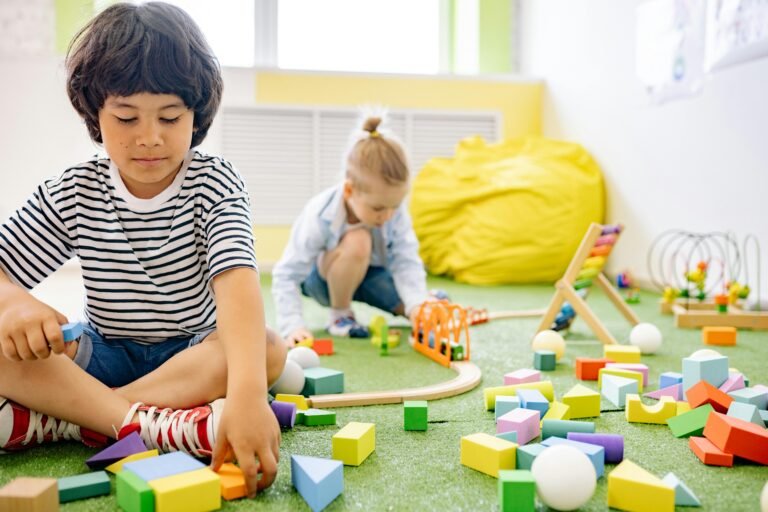
How to Choose the Best Toys for Every Age: A Guide to Developmentally Appropriate Play!
As guardians, we frequently wonder: Is this toy appropriate for my child’s age? Will it help them develop and learn, or is it simply something more to mess the toy box? The right toy can improve things greatly in a kid’s advancement by supporting motor skills, mental development, imagination, and critical thinking skills.
Picking a toy that is age-fitting, safe, and drawing in is significant to keeping kids both engaged and learning. In this blog, we’ll investigate how to decide if a toy is formatively suitable for a kid’s age and what variables to consider prior to making a buy.
Understanding Developmental Stages and Toy Selection
Prior to purchasing a toy, it’s critical to comprehend a child’s developmental stage to guarantee the toy matches their learning skills. Here’s a quick guide to toy suitability by age:
👶 0-6 Months (Newborns & Infants)
✅ Best Toys: High-contrast mobiles, soft rattles, textured sensory toys, and plush toys.
🔹 Why? Babies at this stage are learning to focus their vision, recognize sounds, and explore textures.
👶 6-12 Months (Babies)
✅ Best Toys: Teething rings, activity gyms, soft books, stacking rings, musical toys.
🔹 Why? Babies begin to get a handle on objects, perceive circumstances and logical results connections, and develop hand-eye coordination.
👶 1-2 Years (Toddlers)
✅ Best Toys: Push-pull toys, nesting cups, shape sorters, large building blocks, ride-on toys.
🔹 Why? Little children further develop strolling, critical thinking, and fine motor skills.
👦 2-4 Years (Preschoolers)
✅ Best Toys: Building blocks, pretend-play sets, play dough, tricycles, puzzles.
🔹 Why? Empowers innovativeness, independence, and role-playing activities.
👧 4-6 Years (Early School Age)
✅ Best Toys: Puzzles, art & craft kits, simple board games, action figures, dolls.
🔹 Why? Strengthens problem-solving, teamwork, and communication skills.
👦 6+ Years (Older Kids)
✅ Best Toys: STEM kits, sports equipment, coding games, complex puzzles, construction sets.
🔹 Why? Encourages critical thinking, strategy, and active learning.
Key Factors in Determining if a Toy is Developmentally Appropriate
While assessing a toy, think about these significant variables:
✅ 1. Safety First
- Guarantee the toy is produced using non-harmful materials and has no sharp edges.
- Stay away little parts for kids under 3 because of choking hazards.
- If battery-operated, ensure battery compartments are secure.
✅ 2. Encourages Age-Appropriate Skills
- Does the toy help develop the child’s current motor, cognitive, or social skills?
- Is it too easy or too challenging for their age?
- Does it offer a learning experience beyond entertainment?
✅ 3. Promotes Active Play & Exploration
- Search for toys that draw in youngsters in development as opposed to simply uninvolved diversion.
- Involved exercises like stacking, arranging, or role-playing on mental and coordinated movements.
✅ 4. Boosts Creativity & Imagination
- Open-ended toys like LEGO, blocks, dolls, and art supplies empower imagination.
- Imagine playing things like kitchen sets or spruce up outfits help in role-playing and storytelling.
✅ 5. Supports Social & Emotional Growth
- Board games, puzzles, and cooperative playsets show kids collaboration, tolerance, and critical thinking.
- Dolls, action figures, and storytelling toys support compassion and profound articulation.
✅ 6. Longevity & Multi-Use Features
- Look for toys that grow with the child, such as modular building sets or adjustable difficulty puzzles.
- Multi-functional toys ensure long-term engagement and learning.
Common Mistakes Parents Make When Choosing Toys
Indeed, even with the best expectations, guardians in some cases pick some unacceptable toys. Stay away from these mistakes:
❌ Buying toys beyond their child’s ability level (causes frustration).
❌ Choosing only “educational” toys (play should be fun, too!).
❌ Ignoring safety labels and age recommendations.
❌ Overloading kids with too many toys (less is often more).
Final Thoughts: The Best Toy Encourages Growth & Fun!
The ideal toy isn’t about how costly or in vogue it is, it is about how well it matches a youngster’s formative requirements and interests.
✅ Observe your child’s play style and interests.
✅ Pick toys that challenge but don’t frustrate.
✅ Encourage hands-on play and creativity.
By choosing formatively fitting toys, you’re supporting your kid’s learning process while making playtime fun and significant!
